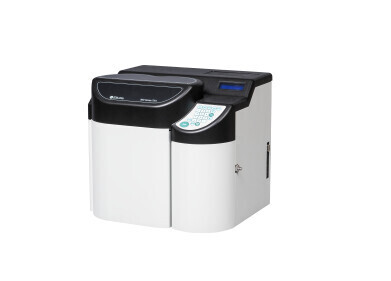Gas Chromatography
What is Pulsed Discharge Detector (PDD) for Gas Chromatography?
Apr 04 2022
In gas chromatography, the detector plays a crucial function in picking up the components of the mixture being separated. The detector element of the equipment collects the chemicals being eluted (washed away with solvent) off the chromatography column. A Pulsed Discharge Detector is one way of doing so. In this post, we’ll take a closer look at Pulsed Discharged Detectors and what they do…
What is a Pulsed Discharge Detector (PDD)?
A Pulsed Discharge Detector or Pulsed Discharge Ionization Detector uses a DC or glow discharge to detect eluted chemicals. A glow discharge is a type of plasma created by running electricity through a gas. Researchers see visible light in the PDD tube when the voltage hits a particular point, known as the striking voltage. The light then changes colour depending on the gas involved.
Separated chemicals from the chromatography column flow counter to the helium gas and become ionized by photons from the helium. Ionized photons create electrons that are funneled towards the collector electrode by bias electrodes. Incoming electrons cause changes in the current, added up as detector output.
The PDD is a non-destructive detector, with both modes non-destructive (discussed below). The other two non-destructive types of gas chromatography detectors are thermal conductivity and olfactometric detectors.
2 PDD modes
In gas chromatography, there are two modes that a PDD might have:
Electron Capture Mode
Useful for measuring compounds with high electron affinities, such as freons, halogens, and chlorinated pesticides. The Minimum Detectable Quantity (MDQ) is the femtogram or picogram for these types of substances. PDDs in Electron Capture Mode are similar to regular radioactive Electron Capture Detectors, as they have an equivalent level of sensitivity and response characteristics. You can operate a PDD in Electron Capture Mode at up to 400°C. The gases used with this mode are helium and methane.
Helium Photoionization Mode
A more universal detector, helium photoionization mode is a non-destructive discharge detector with high sensitivity. The PDD’s response to both organic and inorganic materials is usually linear, and it covers a wide range of compounds. The standing current will increase in fixed gases, showing a positive detector output, with numbers in the low parts-per-billion (ppb) range.
For industries where flame ionization detectors are dangerous or unusable, for example, petrochemical plants and oil refineries, the PDD in helium photoionization mode can be an excellent alternative. If one of the noble gases (such as argon, krypton, or xenon) is mixed with the helium, the PDD can be utilised as a more specific photoionization detector for specific analysis of compound types like aliphatics, aromatics, amines and more.
Find out more about PDDs
PDDs offer an excellent alternative to destructive gas chromatography techniques. If you want to learn more about them, check out our e-learning event, Introduction to the Pulsed Discharge Detector (PDD), for gas chromatography on April 26th. Or find out more PDDs for gas chromatography in our Ask an Expert session with Peter Nastold.
Digital Edition
Chromatography Today - Buyers' Guide 2022
October 2023
In This Edition Modern & Practical Applications - Accelerating ADC Development with Mass Spectrometry - Implementing High-Resolution Ion Mobility into Peptide Mapping Workflows Chromatogr...
View all digital editions
Events
Nov 18 2024 Shanghai, China
Nov 18 2024 Plainsboro, NJ, USA
Nov 20 2024 Karachi, Pakistan
Jan 20 2025 Amsterdam, Netherlands
Feb 03 2025 Dubai, UAE













